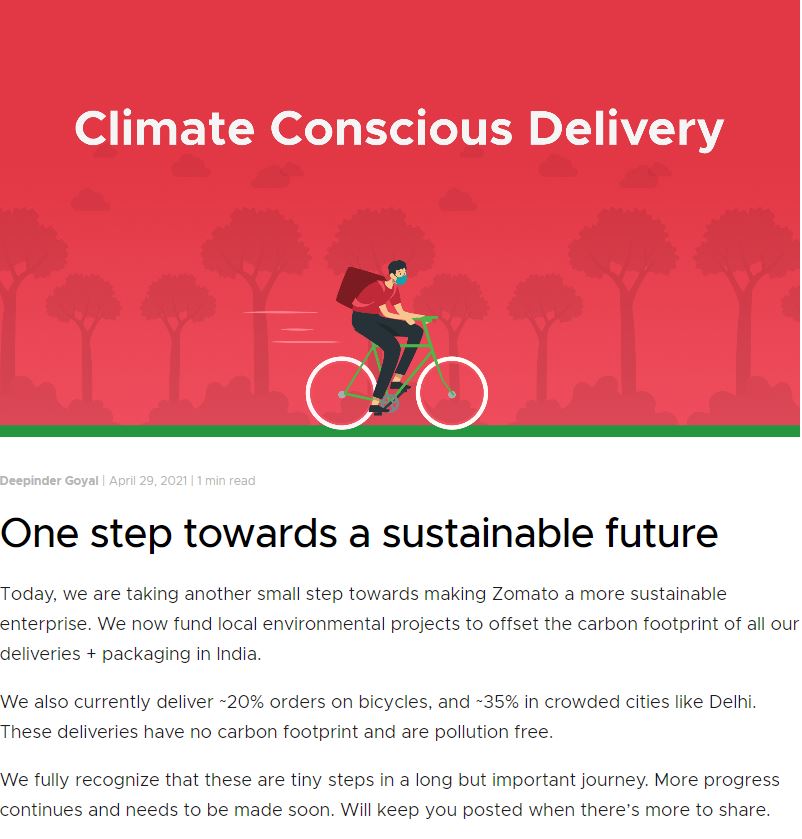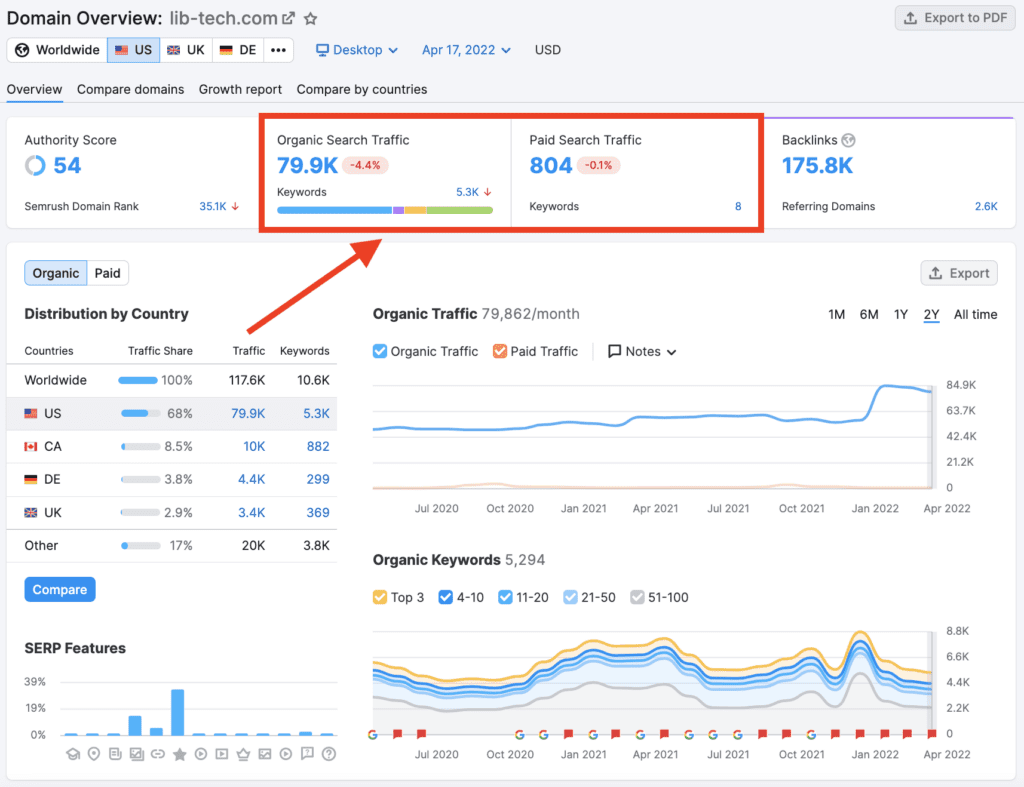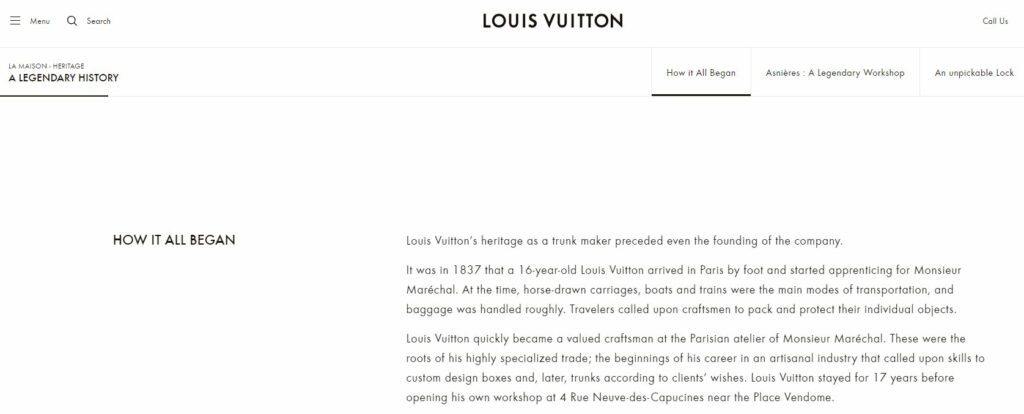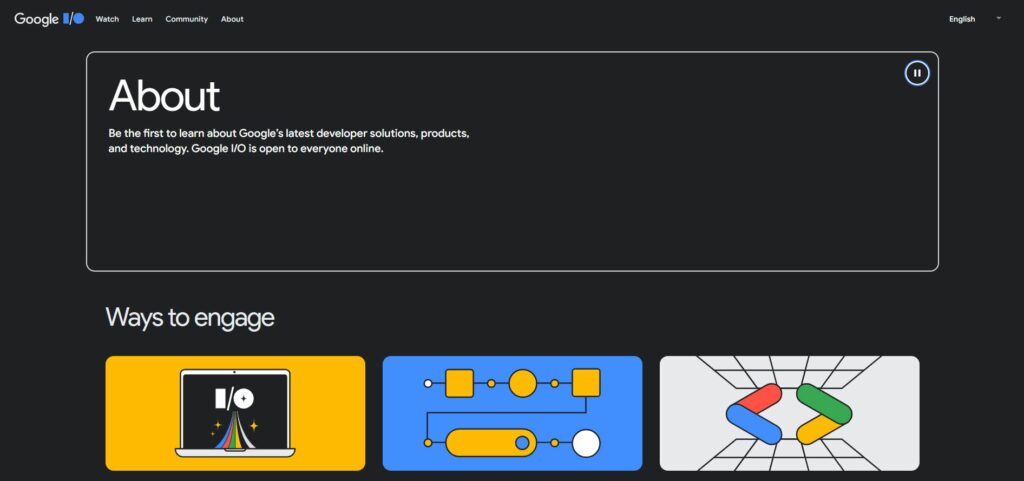Having a robust brand is vital for contemporary businesses. Apart from creating a unique position in the market, an effective brand can help one stand the test of time to remain relevant for a long time in the industry.
Depending on the multiple types of branding, companies curate a distinctive identity that sets them apart from the competition.
Keep reading to learn more!
Top 17 Types of Branding Strategies for Businesses
Brand is the unique perception that the audience develops about a business. Defined by design, colour palette and messaging – brands associate a set of beliefs and values that distinguish a business from the other players in the market.
With positive perceptions, it makes one memorable and recognisable to the target group boosting engagement and loyalty.
The following are some of the popular types of brands with examples:
1. Corporate Branding
Corporate branding creates a distinctive personality around a company defining its values, objectives, and purpose for the target group. Aside from creating a unique identity for the business, corporate branding creates a distinct persona that the audience can connect and interact with. It promotes better communication and connection between the brand and its audience.
Example: Amazon

Amazon is one of the most popular eCommerce marketplaces in the world. The logo of the company itself has come to define its brand identity as the a-to-z marketplace where you can get virtually everything.
2. Personal Branding
Personal branding is one of the most popular types of branding that needs a conscious effort to position oneself as an authority in a field. It allows individuals to control and manage their public reputation and enhance credibility in the industry – thus creating a brand.
Based on the industry, precise personal branding helps individuals claim thought leadership in an area. Further, it enhances reliability while empowering individuals to shape public opinion.
Example: Elon Musk

Elon Musk is among the most effective examples of a personal brand. From SpaceX to Tesla – Musk is known for his entrepreneurial ventures that are futuristic in vision. His personal brand image is that of the self-made billionaire who stands for innovation and ground-breaking inventions in the world of technology.
3. Product Branding
It allows businesses to create a distinct identity for a product which curates an idea about what to expect. In spite of being a part of the company, product branding helps the businesses to differentiate it from the brand to claim audience interest and awareness.
Example: Apple Vision Pro

One of the fresh and pertinent examples of product branding is Apple’s new VR+AR headset, the Apple Vision Pro. In spite of being a product from Apple, the Vision Pro ditches the characteristic “i” line of branding that once accompanied all products like the iPod, iPhone etc. making it stand apart. The headset further introduces a new product line up which is made into a brand in itself.
4. Service Branding
Service branding is the process of highlighting intangible services and formulating a distinct identity out of it. Instead of focusing on the product or the core service itself, service branding emphasises the company’s authority, professionalism, and transparency to create a suitable brand image.
Example: PwC

One of the big 4 consulting firms – PwC is known for using this particular type of branding to maintain its position as one of the thought leaders of the industry. The company often reiterates terms like ‘trust’, ‘authority’, and ‘value’ to claim its domineering position in the service sector.
5. Geographical Branding
This type of branding is more applicable for places and locations rather than businesses. However, aside from tourist places, the real estate industry also utilises this type of branding strategy to highlight its prospects.
Geographic branding highlights the unique factors in a particular area and turns them into a core part of the sales pitch to make it attractive.
Example: Las Vegas, US

Las Vegas is often referred as the Sin City of the US. The desert city is touted as the ultimate place for indulgence. The geographic branding goes on to shape popular movies like The Hangover (2009) which revolves around this narrative or perspective of Las Vegas being wild and uncontrolled.
6. Cultural Branding
Cultural branding appeals to a group’s beliefs and values to establish an emotional connection between a brand and the target group to create loyal customers. The strategy goes beyond products and services and aligns a brand’s ideals and visions with its target audience for seamless messaging.
Example: Harley-Davidson

With a combination of events, training, educational blogs, archival footage and tour planning – Harley-Davidson sells a lot more than just motorcycles. All these complementary services and information have allowed Harley to create a culture and community around riding.
This helps the company stand out in the industry and create its own set of loyal followers.
7. Conscious Branding
Conscious branding involves a responsible approach to business. Some popular strategies of conscious branding are reducing carbon footprint, contributing to reducing energy consumption, recycling and banning the usage of plastic.
This type of branding sends a strong message about responsible and sustainable practices that strive to maintain the ecological balance of our planet. Conscious branding also allows companies to connect and interact with environmentally conscious audiences and create loyal customers out of them.
Example: Zomato

The Indian food delivery app proudly boasts of its carbon and plastic-neutral operations. The company adapts two strategies, one is to discard usage of single-use containers, and straws that are made of plastic. Further, it actively plants trees to offset the carbon emissions caused by delivery vehicles.
8. Performance Branding
Performance branding combines performance marketing along with branding to create a cohesive approach at creating real-time data-driven communications. This strategy targets the bottom-of-the-funnel audience to convert as well as to establish a cohesive brand identity.
By highlighting the brand’s capacity to drive better performance, performance marketing curates an agile brand identity for the target group.
Example: Semrush

Semrush is an internet marketing company that offers marketers more access to optimize their campaigns. By providing access to in-depth data, Semrush pledges to ease tracking while accelerating ROI for the business.
9. Experience Branding
Experience branding is one of the most potent examples of when a brand associates a type of experience with itself. The goal of this type of branding is to associate a particular experience and sensation with its product and services.
Example: Disneyland

It is not a typical brand as most others on this list, but Disneyland is one of the most potent examples of experience branding. Essentially a theme park, Disneyland allows visitors to revel in the fantastical world of the Disney characters.
10. Media Branding
Media branding is a content-led brand creation strategy which creates a distinctive brand around a media channel or communication. The strategy is mostly used by people or businesses with widespread reach in their industry. Media branding is especially useful for B2B brands to create a distinctive persona separate from the service or product brand to communicate its authority in the industry.
Example: Blogs by Neil Patel

As one of the celebrated authorities in the SEO industry, Neil Patel is known for his insights into the developments of the field.
While Neil offers tools like Answer the Public and Ubersuggest for marketers, he also communicates with the audience through helpful and insightful blogs. This has allowed Neil Patel to curate a distinctive media branding which is an extension of his personal brand.
11. Group Branding
Group branding is when multiple companies come together to share similar style guides, brand colours, and elements to represent a complementary brand identity in the market. This is usually helpful for a chain of brands under a parent brand.
It communicates synergy between the brands while establishing authority. As a result, the goodwill of a brand comes to affect another brand in the same group to drive enhanced growth.
Example: Google

Google offers numerous tools and applications for users as well as businesses and developers for comprehensive solutions. The autonomous applications within the Google ecosystem are designed with the material UI accompanied by signature theme colours of blue, red, yellow and green.
12. Co-Branding
Co-branding refers to the act of two different brands coming together to leverage each other’s brand identity and boost authority and awareness in the industry.
Example: GoPro x Red Bull
While GoPro has come to stand for an active and adventurous way of life, Red Bull has long presented itself as an aspirational energy drink. It is little surprising then, that the brand identity can complement each other.
The co-branding endeavour reached its peak with the Stratos where under the sponsorship of the two brands Felix Baumgartner created 3 world records by jumping from a space pod 24 miles above Earth’s surface.
13. Luxury Branding
Luxury branding positions a brand as a premium alternative to market competition. Compared to established market players, luxury brands differentiate themselves with inspired marketing strategies. Luxury brands seek to establish a unique niche by leveraging key aspects like better quality and design.
It helps them eradicate competition and create a separate forte for the product and services.
Example: Louis Vuitton

Louis Vuitton is a luxury fashion and lifestyle brand. It distinguishes its brand identity by referring to heritage, attention to detail and commitment to quality craftsmanship. By appealing to factors like sustainable product usage and responsible marketing, LV creates a distinct brand identity that aligns with its customers thus creating a loyal group of audience around itself.
14. Retail Branding
Any brand is essentially an identity. Retail branding capitalises on this phenomenon to create tailored retail stores that evoke a particular sensation or emotion among the crowd. Typically, it uses complementary design aesthetic and colours that highlight the brand value and ideals.
Example: Crossword Books

Crossword is India’s biggest physical bookstore chain. It uses mass targeting strategies to cater to varied users across different demographics of the audience. The bright yellow themes along with spacious bookstores celebrate all things related to books. The stores also organise book signing and other events for bibliophiles. Thus it has created a distinct identity that has come to represent the booklovers’ paradise.
15. Event Branding
Event branding is a set of logo, designs, and themes – basically a unique identity created for an event. The event may be an extension of an established brand or may become a completely new brand itself with its distinctive persona.
Example: I/O

Google I/O is the annual developer conference hosted by Google in May in California, US. The conference complements Google’s brand image with images and themes. Further, the event uses its own website featuring all the details about the event.
Developers also showcase their cutting-edge technology making it a remarkable event for tech enthusiasts. One notable example is in 2021 when Google used 360-degree cameras to record the complete event live for remote participants to get the complete experience.
16. Offline Branding
This is when businesses opt for offline strategies to target the intended audience group. Offline branding includes usual channels like TV, newspaper advertisements, billboards, flyers etc.
In most cases, these types of branding are adopted by businesses to cater to people in tier II and tier III cities. It is also useful for local businesses to micro target a specific group at minimal costs.
Example: Share a Coke Campaign

Coca-Cola’s Share a Coke Campaign created a worldwide stir through offline branding. Under the campaign, the brand personalised each Coke bottle with the label “Share a Coke with…” followed by a name.
Apart from producing a personalised brand identity that easily connects with the individual, the ‘Share a Coke’ campaign created the opportunity for user generated content. Allowing organic promotions of the brand.
17. Disruptive Branding
Disruptive branding refers to innovative and out-of-the-box strategies to create a robust brand identity. It goes beyond conventional practices to establish a distinct personality around your product or services that is not easy to replicate.
As a result, this type of branding allows a business to have an enduring impact on the audience.
Example: McDonald’s

With fast food joints available everywhere, it hardly seems like an uncommon thing. However, the entire concept of fast food would not even become a reality without McDonald’s.
It was the brainchild of Maurice and Richard McDonald to streamline kitchen operations for faster cooking and efficient dispatch. This innovative concept led Ray Krok to purchase and turn the McDonald’s restaurant into a franchise. Soon, other operators in the food industry came to adopt the strategy of McDonald’s to establish what is known as fast food restaurants today.
Takeaway
While there are different types of branding strategies, choosing the right one for your business goals is the key to develop a consistent brand identity. Ultimately, it is the target group’s preference and pain points that determine the brand image of a business.
So, you may use a combination of several branding strategies to increase brand recognition to different consumer demographics and find the sweet spot that works for your business.
Frequently Asked Questions
1. What are the 5C’s of Branding?
Consistency, clarity, creativity, commitment, and consultation are the 5 core components to develop an effective brand that stands out in the market.
2. What are the steps of branding?
The steps to formulate an effective branding strategy are to identify the audience, research the existing competitors in the market, define your purpose and motivation, develop your brand’s story, and consistently spread the message across different channels of communication.
3. What is the role of branding?
The fundamental role of branding is to develop and distinctive identity for a business. It helps you stand out in the market, differentiate from the competitors and build a loyal customer base around the business.
4. What is meant by branding method?
Branding methods are the techniques and strategies used by marketing professionals to develop a unique identity through consistent and uniform messaging across different channels and platforms.
5. What are the characteristics of a brand?
A successful brand represents a set of human characteristics that makes it relatable and attractive. A well-defined brand personality has a distinct voice, certain core values, a mission or goal for the future and a visual identity.
Subhodip Das is the founder and CEO of Das Writing Services Pvt. Ltd. He has an experience of 12 years in the field of Digital Marketing and specialises in Content Writing and Marketing Strategies. He has worked with well-established organisations and startups helping them achieve increased Search Engine Rank visibility. If you want to grow your business online, you can reach out to him here.
Subhodip Das is the founder and CEO of Das Writing Services Pvt. Ltd. He has an experience of 12 years in the field of Digital Marketing and specialises in Content Writing and Marketing Strategies. He has worked with well-established organisations and startups helping them achieve increased Search Engine Rank visibility. If you want to grow your business online, you can reach out to him here.




Leave a comment